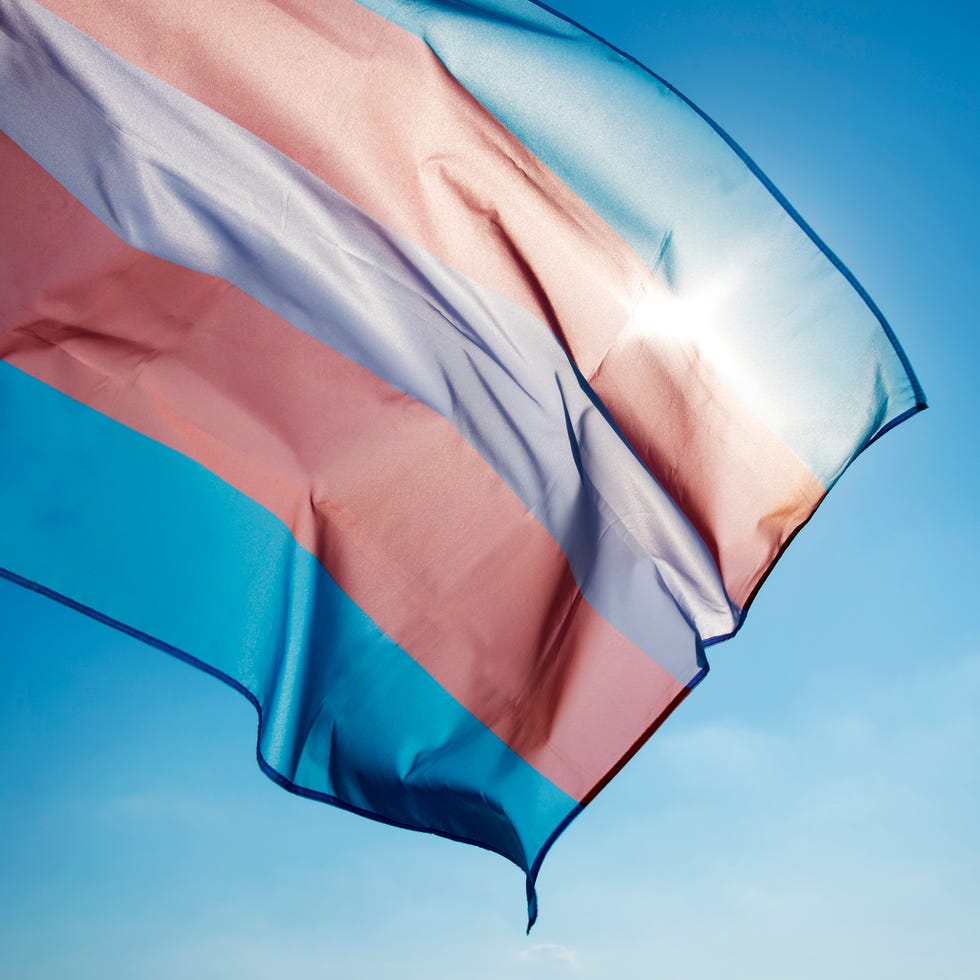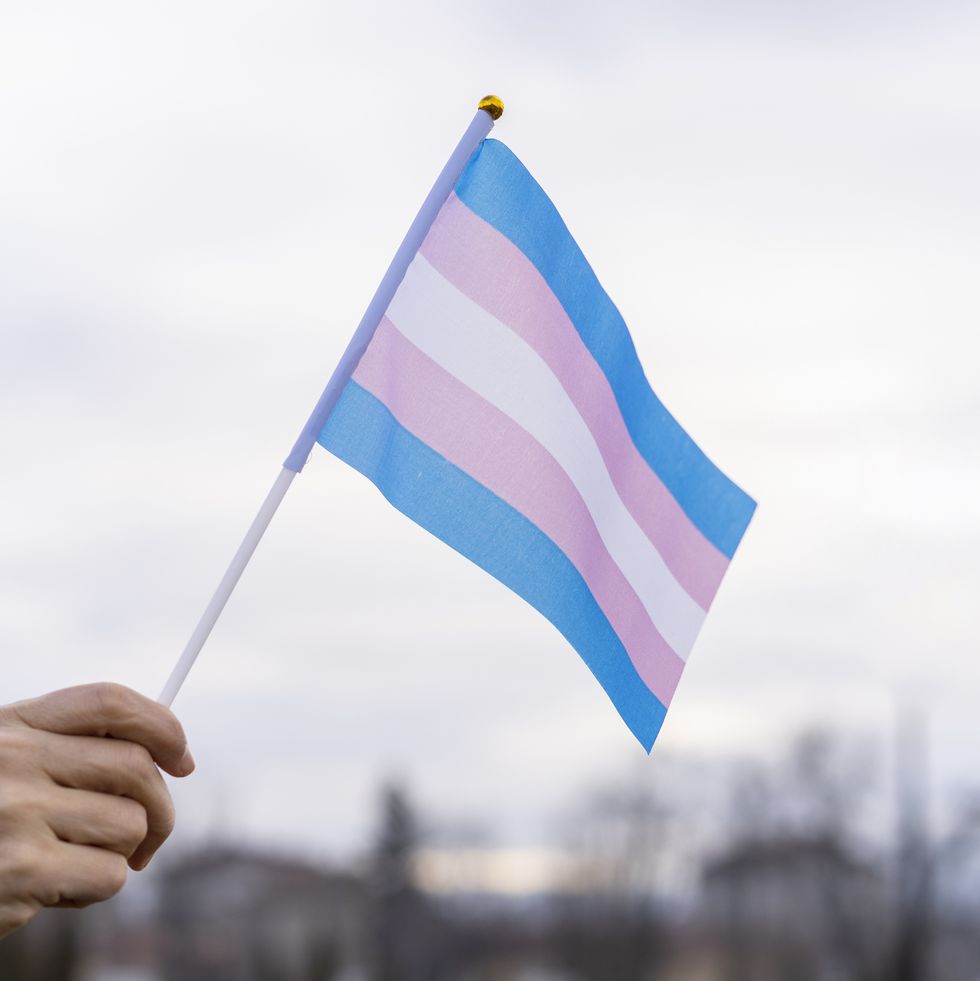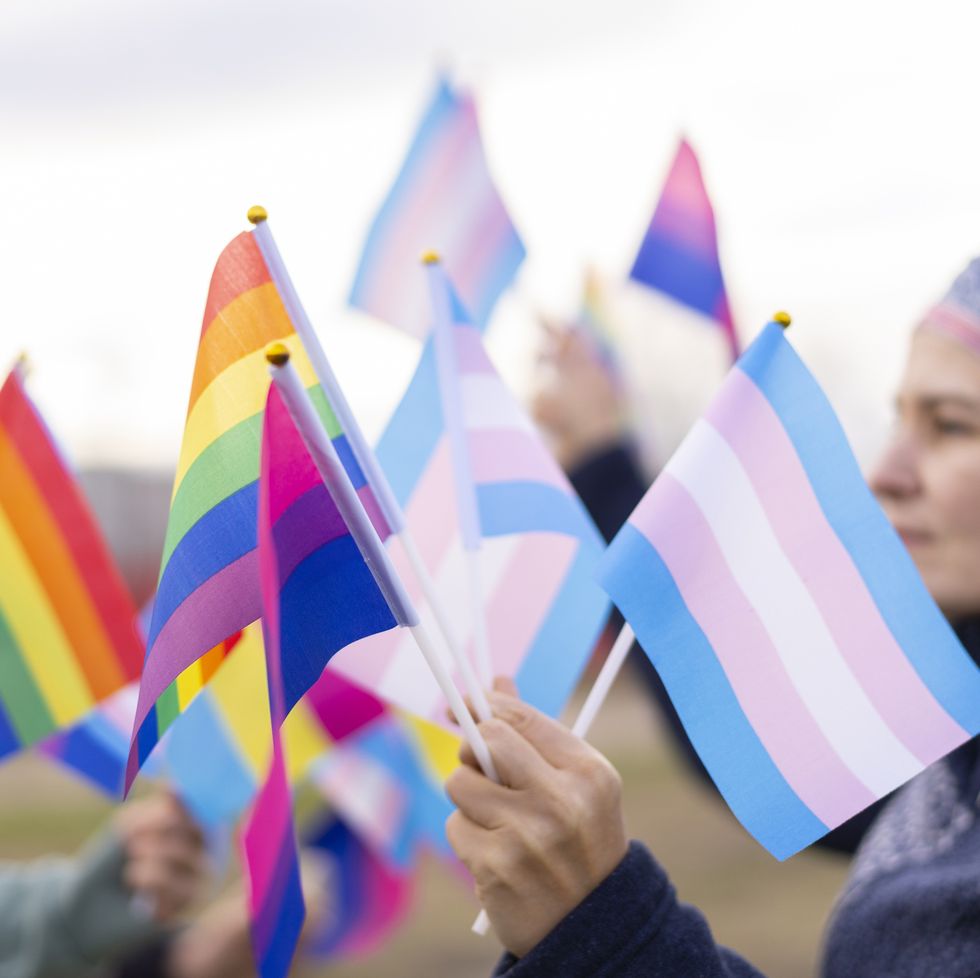The History Behind the Transgender Pride Flag (original) (raw)
To look around at the many rectangles of colorful nylon flapping in the breeze outside homes and businesses, the stickers plastered to car bumpers and windows, enamel pins or buttons affixed to lapels and bags and even the flag-shaped emojis on social media profiles, there's a flag for everyone and everything. And there's a reason for that: Flying a flag is an easy, recognizable way of telling the world who you are and what you stand for or belong to, whether that's a country, a cause or an identity. They've been particularly important for marginalized populations, so you may have seen the disability pride flag and LGBTQ+ pride flags, in particular.
Of course, with the proliferation of flags out there, it can be easy to lose track of which one stands for what. When there's more than one flag for a given cause, it can get even more confusing. One of the most popular LGBTQ+ flags is the transgender pride flag, which is made up of five pink, blue and white stripes. With many trans rights under attack nationwide right now, there may be no better time to learn more about the flag and its deep meaning for the trans and nonbinary community.

nito100//Getty Images
Why do we need a transgender pride flag?
The transgender pride flag is relatively new, only having come about in the late 1990s, and its rise in popularity over the last decade or so in particular may have to do with the number of people who are embracing their trans or nonbinary identities. According to a June 2022 study from the Pew Research Center, 1.6% of adults in the United States identify as transgender or nonbinary and 5% of young adults in the U.S. say their gender is different from their sex assigned at birth. But sadly, that doesn't mean trans people are finding themselves welcomed into society with open arms.
In 2022, the American Civil Liberties Union reported that the transgender community continues to face rising rates of discrimination in schools, healthcare and places of employment, and the organization is tracking 496 active anti-LGBTQ+ bills as of press time. According to the Human Rights Campaign Foundation, 35% of trans teens live in states that ban access to gender-affirming healthcare. That's why it's so important for everyone, especially straight and fellow LGBTQ+ allies, to show support for the trans community, advocate for increased trans visibility and acceptance, and loudly and proudly amplify the accomplishments, contributions and voices of trans people.
History of the trans pride flag
Monica Helms, a trans woman, activist and U.S. Navy veteran who cofounded the Transgender American Veterans Association designed the flag in 1999 and first let it fly at a 2000 Phoenix Pride parade. She told the Daily Beast in 2017 that the design “came to [her]” one morning, calling it a “divine intervention.” When she brought it to that first parade, people were drawn to it right away, although Helms said she didn't even realize how widespread it had become until years later.

Vladimir Vladimirov//Getty Images
“This was for me and if nobody had embraced it, it still would have been OK for me," she told the Daily Beast. _“_But then, people started seeing it and they thought the pattern was great and they liked the reason for the colors and it just took off.”
In 2014, she donated the original to the Smithsonian National Museum of History, according to Queer X Design: 50 Years of Signs, Symbols, Banners, Logos and Graphic Art of LGBTQ by Andy Campbell. That means the flag is memorialized as a part of not only LGBTQ+ history, but the history of our nation and its people — no matter how we identify.
What do the colors of the transgender pride flag mean?
Because of its intentionally versatile design, the transgender pride flag isn't just a pretty face — it's a symbol of social awareness, Helms says. "The pattern is such that no matter which way you fly it, it is always correct, signifying us finding correctness in our lives," she explains. “The speed with which the flag’s usage spread never fails to surprise me, and every time I see it, or a photo of it, flying above a historic town hall or building I am filled with pride,” she said in her 2019 memoir, More Than Just A Flag. And the colors she used are full of intention too, which may explain their resonance.
- Pink has traditionally been the color signifying a female identity in the U.S., so the light pink stripe represents the feminine.
- Blue has long symbolized boys, so the blue stripe represents the masculine identity.
- White is for those who are transitioning, people who have a neutral gender or no gender, and those who are intersex, Helms explained, according to Pride.
Are there other LGBTQ+ Pride flags?
Just about every one of the unique identities that make up the LGBTQ+ community has its own flag. So if you or a loved one is looking for a way to support the community, show your pride for your own identity outside your home or business, online as part of your social media profile or email signature or wear it as a lapel pin or backpack decoration, there's a flag for that.

Vladimir Vladimirov//Getty Images
And if you're an ally, don't be afraid to stand up, speak out and show your support. That's especially important on days that recognize the beauty of the trans community, like Transgender Day of Visibility (March 31), Transgender Awareness Week (November 13 to November 19) and Transgender Day of Remembrance (November 19). It takes a village, and the more we all wear our pride on our sleeves, the safer and more universally accepted we'll all be.

Lizz (she/her) is a senior editor at Good Housekeeping, where she runs the GH Book Club, edits essays and long-form features and writes about pets, books and lifestyle topics. A journalist for almost two decades, she is the author of Biography of a Body and Buffalo Steel. She also teaches journalism as an adjunct professor at New York University's School of Professional Studies and creative nonfiction at the Muse Writing Center, and coaches with the New York Writing Room.